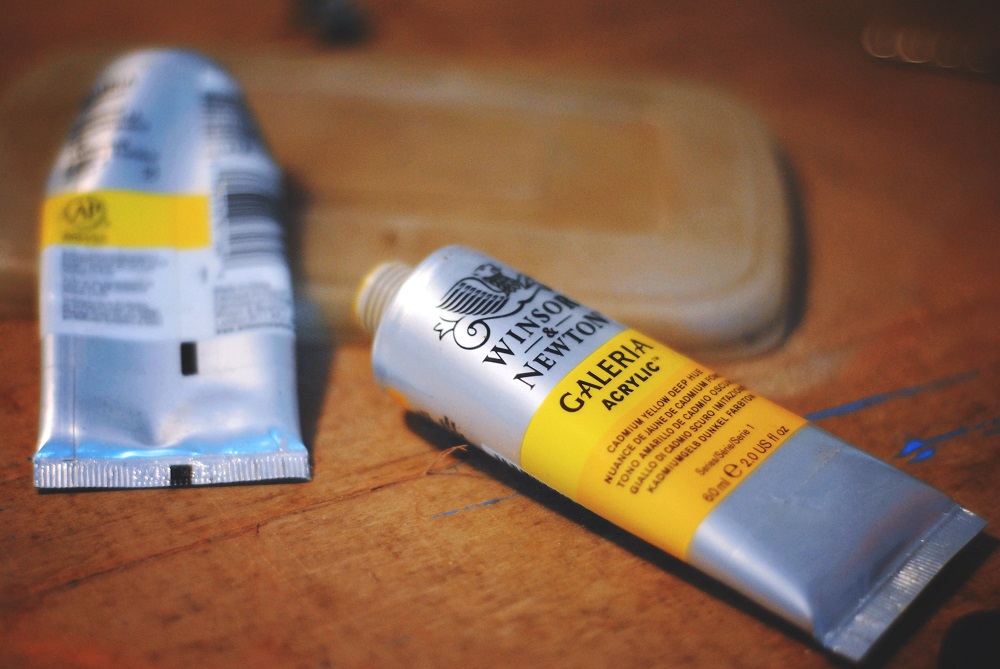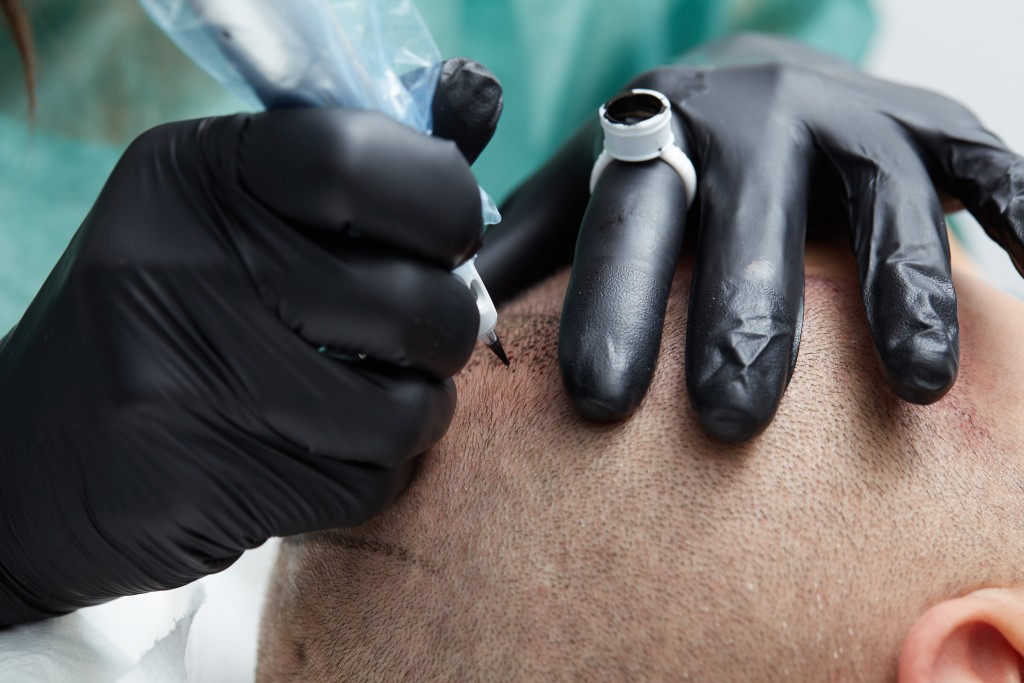Acrylic paint is a very useful type of paint for all types of painters. It’s versatile and can work well on different types of surfaces. Its properties make it water soluble, allowing you to change its consistency depending on the finish you want. Yet, when it dries, it becomes waterproof, weatherproof, and anti-cracking to withstand exterior wear. Acrylic paint is washable, but its properties can make it difficult to rub off.
Most people choose to use acrylic paint on canvas, but it works well on other types of surfaces. Some of these include walls (both indoor and outdoor), leather, paper, fabrics, brickwork, metal, and anything else that isn’t greasy or glossy.
In this article, we explore the basics of using acrylic paint on different types of wood. Here’s what you need to know.
Can Acrylic Paint Be Used on Wood?
Acrylic paint can be used on different types of wood: raw wood, processed wood, wooden planks, cardboard, paper board, and other forms of wood.
You can find wood and processed wood crafts in garden emporiums, woodcraft stores, and art stores. You can buy wooden planks in hardware stores. And you can get cardboard, illustration board, paperboards, and more in art stores, school and office supply stores, and craft stores.
Like canvas, the finished result can look much better if you prime your surface.
Sanding Wood

Wooden planks and raw wood should first be sanded into a smooth surface for a much better application. Using a sanding sponge (you can find these in hardware stores) or sandpaper (with 140 to 180 grit), sand with the grain of the wood to smoothen the surface. This is necessary if you’re painting wood that wasn’t sanded, but there’s no need to do this if it’s already pre-sanded. When finished, wipe the surface with a tack cloth to remove excess wood and dust.
Priming Wood
For wooden planks, raw wood, and other processed wood items, prime the wood with a primer. You can buy this in a hardware store or craft store. These are available in spray-on and brush-on types.
For cardboard and other wooden products mixed with paper, use a special kind of primer called gesso. This looks like white acrylic paint, but the consistency is thinner and dries harder. The result is that the surface is stiffer and less likely to absorb moisture, especially if you’re planning to mix more water to acrylic paint. Without gesso, the water will soak into the board.
Let the primer dry completely before you begin painting. This may take between two hours to overnight, depending on how much primer you’ve put, how many layers, and the temperature of the room.
Priming your wood before painting can improve the color, moisture absorption, and overall finish of your paint.
Painting on Wood

If you’re using student-grade acrylic paint, it’s best to squeeze your paint onto the palette only when it’s time to use that color to paint. Acrylic paint dries faster than other paints, so if you expose paint to air, it will start to dry before you can even use it. If this bothers you, mix your acrylic paints with acrylic gels or use professional-grade acrylic paints, as these can slow down the drying. You can also add more water, but this can affect the consistency of the paint.
Adjust the consistency of the paint by adding a few drops of water until you reach the desired spreading consistency. Use clean brushes. It’s best to apply a thin first layer of paint and letting it dry for a few minutes before adding more layers.
Drying Time of Acrylic Paint on Wood
How long it takes acrylic paint to dry generally depends on the brand. Your paint should indicate the estimated time needed to let the paint dry. Acrylic paint can take less than 30 minutes to feel dry to the touch, but it’s best to give small to medium-sized paintings up to 24 hours to dry.
Wood products that weren’t primed or applied with gesso, paintings that have used a lot of water for thinning the paint consistency, and paintings that use a thick layer of paint may take longer to dry completely. To be sure it’s dry, leave it in a warm, low-humid, and well-ventilated room for 48 hours.
Sealing Your Acrylic Paint
Once it’s completely dry, you can seal in the paint, give it a uniform finish, and protect the paint with sealants. Make sure to choose your sealant carefully, as they come in matte, glossy, satin, and other types of finishes.
For wood products, you can use a wax-based or polycrylic sealant. Wax sealants have a more flat finish, while polycrylic is glossier. For wooden board products, you can use varnish.
Apply a thin first layer of sealant and let it dry to the touch before adding a second layer. Allow the sealant to cure and dry according to its instructions, which should be around two to three weeks. It will appear dry to the touch after a few hours, but it takes weeks for sealants to fully dry and harden. During this time, avoid moving your painting too much as this can hinder the drying process or damage the acrylic paint.
Displaying Your Wood Art
Unlike canvas art, it may be difficult hanging your painted wood on the wall. If it is a thin wooden plank, illustration board, or cardboard, it may be possible to have it framed at a specialty store so it can be hung. The cost of doing this can range start at $30 upwards, depending on the size of the board, the type of frame, and the quality of the frame and framing job.
Some wooden products can be used as a paperweight and placed on top of coffee tables, desks, shelves, and other flat surfaces. If it’s been properly primed, dried, and sealed, you don’t have to worry about cracking or breaking down as long as it’s properly handled.
Why Wood Art?

Wooden art pieces have a more earthy and natural look to them. If you’re looking for an earthy, natural-looking aesthetic, it’s much better to paint on wooden planks, processed wood, or raw wood textures rather than a blank canvas.
Compared to canvas, wood is relatively less expensive. Its rigid surface is more rigid, which makes it less prone to cracking as it dries. When sanded and primed properly, a wooden surface is smoother and easier to glide your paint brush across.
That’s not to say that working with wood does not come with drawbacks. Wood is generally heavier than canvas, making it much difficult to work with. Also, all forms of wood (including wood products and processed wood) may have some remaining amounts of natural acids or oils. If unprimed or unsealed, the acids may discolor or yellow the painting, decreasing its quality.
Larger wooden pieces weigh more than actual canvases. If framed incorrectly, they can start to bend inwards and warp your painting. If you’re going to hang the painting, be sure to have it correctly framed (with enough braces to distribute the weight evenly).




